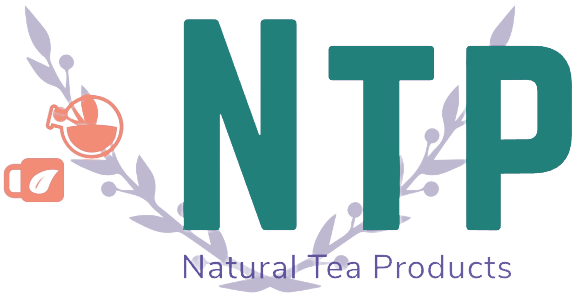Gastroesophageal reflux disease (GERD) happens when stomach acid repeatedly
flows back into the esophagus, causing burning, cough, sour taste,
hoarseness, and even sleep disruption. While medication can help, your daily
food choices are often the biggest drivers of good (or bad) GERD days.
Below is a clear, practical guide to build a reflux-friendly plate—without
feeling deprived.
The Big Picture: How Food Triggers Reflux
Certain foods relax the lower esophageal sphincter (LES)—the “valve”
between your esophagus and stomach—or increase acid production, gas, and
pressure. When pressure rises or the LES relaxes, acid is more likely to
splash upward. Your strategy: reduce LES relaxers and bloat-makers,
increase soothing foods, and eat in calmer portions and patterns.What to Eat (Build Your Plate Around These) 1) Lean proteins
Chicken, turkey, fish, eggs, tofu, tempeh, and lentils tend to be gentler
than heavy, greasy meats. Choose baking, grilling, or air-frying over
deep-frying.
Smart swaps: ground turkey instead of sausage; grilled salmon instead of
fried fish.
2) Low-acid fruits
Bananas, melons, apples, pears, and berries are generally well tolerated.
If citrus bothers you, skip oranges, grapefruit, and pineapple.
Tip: Make a small fruit bowl for dessert instead of sweets.
3) Vegetables (especially steamed or roasted)
Zucchini, broccoli, green beans, spinach, carrots, sweet potatoes,
cucumbers, and leafy greens support digestion without heavy fat. If raw
onions or tomatoes trigger you, cook them well, reduce quantity, or avoid
them.
Micro-strategy: Add a handful of greens to omelets, bowls, and wraps.
4) Whole grains
Oatmeal, brown rice, quinoa, whole-grain toast, and barley provide fiber
that can help reduce reflux by improving gastric emptying and fullness.
Breakfast win: Oatmeal with banana, chia, and a drizzle of almond milk.
5) Non-fat or low-fat dairy alternatives
If dairy triggers you, try lactose-free or plant-based milks (oat, almond).
For yogurt, pick low-fat, unsweetened options and add fruit yourself.
Pro move: Greek yogurt + berries + ground flax for a calm, protein-rich
snack.
6) Soothing teas and warm water
Ginger tea and certain herbal blends may help calm the stomach and support
digestion between meals. Avoid mint if it triggers you (it relaxes the LES
for some people).What to Limit or Avoid (Common Triggers) 1) High-fat, fried, and greasy
foods
Fried chicken, pizza, wings, creamy sauces, and big cheeseburgers slow
stomach emptying and keep pressure high. If you do indulge, keep portions
small and avoid late at night.
2) Spicy and very acidic foods
Hot peppers, chili oil, raw onion/garlic, and tomato-heavy meals can light
the reflux fire. Many people tolerate mild seasoning and well-cooked
onions better than raw.
3) Chocolate, mint, and alcohol
All three can relax the LES. If you’re flaring, pause them for 2–3 weeks,
then re-test a small amount earlier in the day.
4) Carbonated drinks and large coffees
Bubbles add gas and pressure. Coffee is acidic and can aggravate symptoms,
especially on an empty stomach. If you love coffee, try smaller servings,
low acidity blends, or drink with food.
5) Super-size portions and late meals
Big meals stretch the stomach and push acid upward. Late dinners plus lying
down = classic reflux nights. Aim to stop eating 3 hours before bed.Portion & Timing Rules That Help Immediately
–
Eat smaller, more frequent meals (3 meals + 1–2 light snacks).Chew thoroughly and slow down—this reduces air intake and pressure.Hydrate between meals, not during heavy meals (too much fluid + food
increases volume).Elevate the head of your bed 6–8 inches if nighttime symptoms are
strong.Track personal triggers for 10–14 days; keep what works, drop what
doesn’t.
Sample GERD-Friendly Day
Breakfast: Oatmeal cooked with almond milk; sliced banana; sprinkle of
cinnamon.
Mid-morning: Ginger tea or warm water; small handful of almonds.
Lunch: Grilled chicken bowl with quinoa, roasted zucchini/carrots, olive
oil lemon (light) dressing.
Afternoon: Low-fat Greek yogurt with blueberries and ground flax.
Dinner: Baked salmon or tofu, steamed green beans, and sweet potato.
After dinner: Non-mint herbal tea; stop eating 3 hours before bedtime.Troubleshooting Tips
–
If tomatoes bother you: Use roasted red peppers or a light cashew
“cream” sauce for pasta instead of marinara.If dairy bothers you: Try lactose-free milk or plant-based options;
pick low-fat over full-fat.If you miss spice: Use gentler flavor—smoked paprika, turmeric,
ginger, basil, oregano.If morning reflux hits: Start with oatmeal or eggs + cooked greens and
sip water; have coffee later and smaller.
The Role of Herbal Support
Many people find a daily tea routine helps them stick with smaller meals,
calm the stomach, and cut late-night snacking. If you want a specialized
blend designed for reflux relief routines, consider adding a cup after
meals or in the evening (not mint if mint triggers you). Teas aren’t a
cure, but they can be a steady, supportive habit alongside smart food
choices and sleep.Get Personal Help (Work with a Nutritionist)
If you’re tired of guessing, get a plan tailored to your triggers,
schedule, meds, and goals. Work 1-on-1 with Nutritionist Jay Holt for
practical, step-by-step guidance on GERD-friendly meals, shopping lists,
tea routines, and simple weeknight recipes.
Email: jay@therefluxcoach.com
Prefer quick video tips? Subscribe to my YouTube channel for lessons on
reflux-friendly meals, bedtime routines, and practical swaps:
YouTube: https://www.youtube.com/channel/UCOekIrft5agP9DxrsEEyhGwReady to Take the Next Step?
Support your routine with a reflux-focused tea blend and a simple daily
plan.
Buy Barrett’s Tea: www.barrettstea.com
Questions or coaching? Email jay@therefluxcoach.com and subscribe on
YouTube: https://www.youtube.com/channel/UCOekIrft5agP9DxrsEEyhGw



